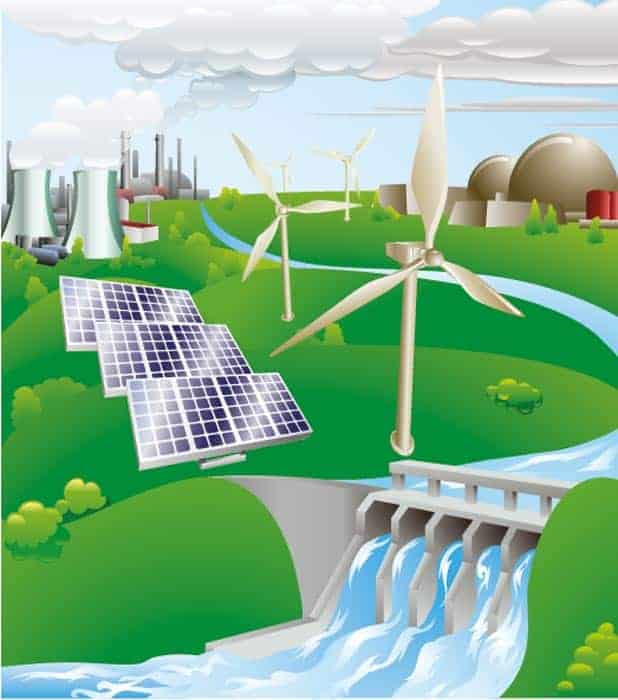Gail Marcus reviews Energy for Future Presidents: the Science Behind the Headlines by Richard A Muller

When I was asked to review Richard Muller’s Energy for Future Presidents: the Science Behind the Headlines, I was intrigued for two reasons. First, I realized that this book – unlike many that deal with energy – covers the whole range of technologies. I have long thought that such a book would be a useful addition to the literature, and I have occasionally thought about writing one myself. So far, the sheer magnitude of the challenge has been enough to deter me.
Second, the book, which was published before the November 2012 US elections, is purported to be a message to whoever was elected president. The idea of directing such a book at a sitting president reminded me of an incident very early in my career, when, as a junior analyst in a firm doing consulting for the US Air Force, I completed my first major report. The recipient of the report was to be a general, and I was told in no uncertain terms that I had to reduce my 50 pages of findings to two pages, because the general was not going to read my whole report. Somehow, I got over the heartbreak that the rest of my words would go unread, but as I picked up this book, I had to wonder: if the general would read only a two-page executive summary, how much would the president read?
The artifice that the author was writing to an actual president wore thin after a while. My guess is that at best, the president might possibly read Muller’s short summary of the issues in the final chapter. However, for those who are likely to read the book, Muller’s presentation provides a very useful compendium of facts about each of the potential technologies in our energy future, and an overview of the key issues involved. In addition, it has some helpful “big picture” suggestions for avoiding various kinds of fads, biases and truisms.
On the whole, I found Muller’s positions on issues fair and balanced. I did disagree with some points, but those points were very specific, and the fact that two reasonable people can disagree on such points should not be surprising. It certainly doesn’t negate the overall value of the book.
Since my own background is in the nuclear field, which is often a lightning rod for debate, I looked particularly critically at what Muller had to say about nuclear power. I found myself in agreement on just about every point. While he acknowledges all the difficulties and issues associated with nuclear power, including the March 2011 Fukushima incident, he makes a strong case that the benefits outweigh the risks. He recommends the continued use of nuclear power, and the aggressive development of more nuclear power stations.
The only puzzle to me is that, after correctly stating in the body of the book that the proposed nuclear-waste repository at Yucca Mountain, Nevada, was never completed, in the summary, he writes about the desirability of reopening the repository and putting more waste into it. Since Yucca Mountain was never finished and never accepted a molecule of waste, I was troubled by the error. I cannot tell if there might be similar errors in discussions of technologies with which I am less familiar.
Still, Muller has clearly looked at the big picture, so it was interesting to read his thoughts on some of these other technologies, and to see how he views them from a global perspective. Take, for example, his thoughts on the role of developing countries in reducing emissions. He – quite rightly, in my view – points out that the world will not achieve anything if developing countries are given a free pass. Instead, we will simply end up replacing emissions from developed countries with emissions from developing countries – and perhaps even end up with more emissions.
Muller also notes that it is in the interest of developed countries to provide financial support for emissions-reduction measures in developing countries. In the current economic climate, that idea may get short shrift, but it seems to me that there are some potential win–win strategies that could reduce emissions overall, while perhaps fostering industries and jobs in the donor countries. On the other hand, Muller’s implication that emissions targets should be based only on total emissions per country is arguable. Clearly, the issue of how such comparisons should be made is complex, but giving no consideration to the size of the population or the gross national product seems unrealistic.
One observation that particularly intrigued me was that the costs and benefits of technologies sometimes differ between developed and developing countries. For example, even if the price of solar cells decreases significantly, solar power will probably remain fairly expensive in the developed world because of the high cost of labour to install the systems. On the other hand, in the developing world, labour is cheaper, so installation costs should be less and solar power could be more economical. This argument, of course, doesn’t address the need for back-up power and/or storage in either case; it simply compares the solar component.
Although I found most of Muller’s assessments of different technologies to be reasonable, in one or two cases, he did not provide sufficient logic for his positions. For example, while he gives some arguments for why we might be able to mine methane hydrates from the oceans, he dismisses the negative assessments of experts in this field without providing a clear explanation as to why the experts are sceptical. Also, although the energy policy discussion in his final chapter provides good summaries of the issues for some energy technologies, he does not address others at all. This seems strange, to say the least. If the likes of smart grid, photovoltaics, wind, batteries, biofuel, fuel cells and flywheels make Muller’s list of technologies that are either important for our future or have breakthrough potential, why does he omit them from his discussion of policy?
I also have a few nits to pick. One comes from the chapter on nuclear power, which is titled “The coming explosion of nuclear power”. I get the joke, and Muller does make a point of explaining why reactors cannot explode, but given the sensitivity of this issue, I would have preferred another title. I also would have liked to see better graphics in a book like this. The figures are mostly pretty small. Some are clearly black-and-white renditions of material that was originally in colour, and a colour version would have conveyed the desired information much more clearly and vividly. I realize from my own book that graphics are a big expense. However, a book intended for the president of the United States surely merits better!
Overall, though, the book is an interesting read. Because of the breadth of its coverage, almost every-one, whether in the energy field or not, should be able to learn something from it. Even if the president doesn’t read it, one hopes that its insights will inform the views of his energy advisers.
- 2012 W W Norton £19.99/$26.95hb 368pp



